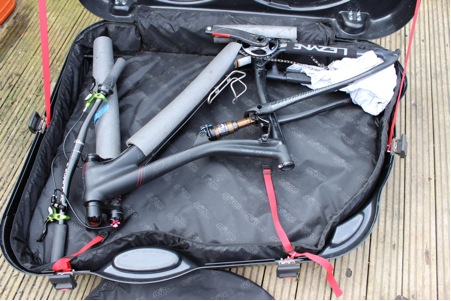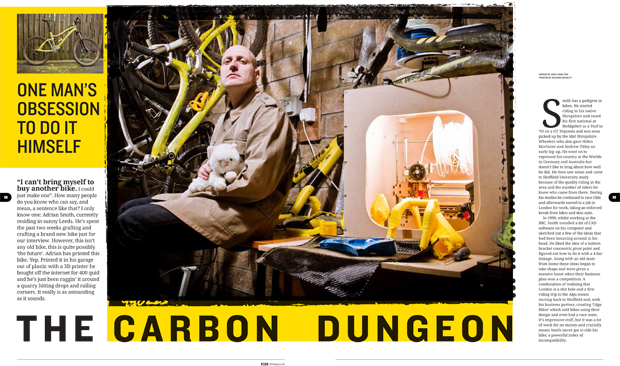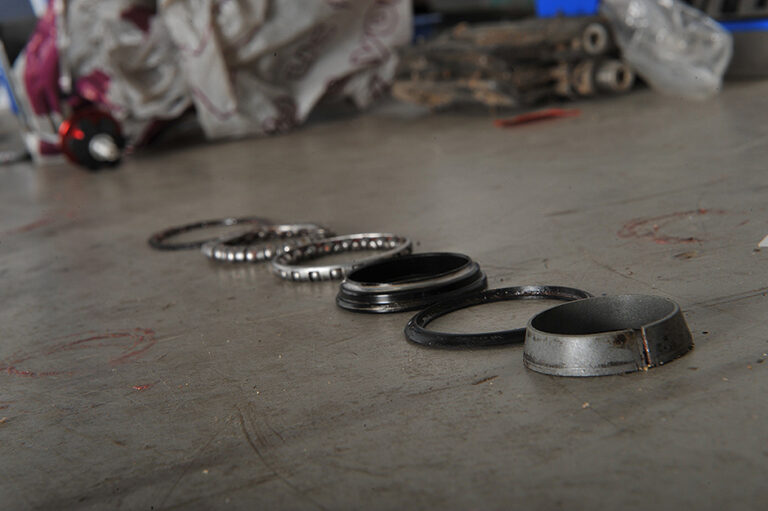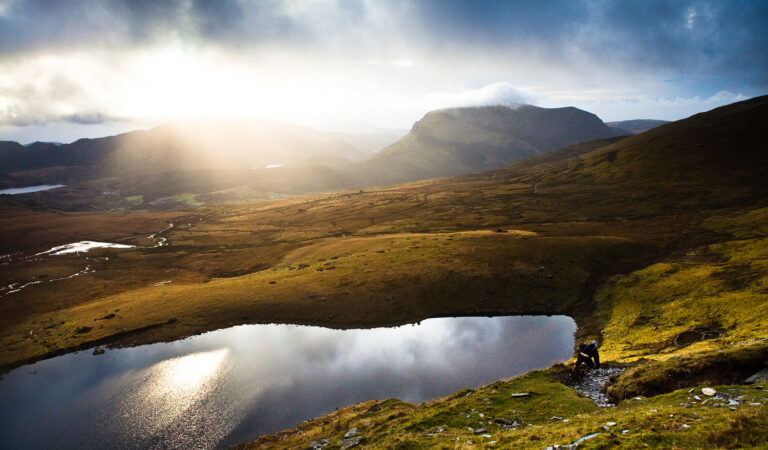CHAPTER TWO
SOME DETAILSo there we have three integral items then to carrying speed – of course pick at detail, but think about throwing away the structured technique book where events take place in isolation. Make your riding inclusive, think about reading and using the ground, avoiding collisions and momentum. Here’s a few more to ponder:
Calculating the best line down a hill. It’s well documented how Gwinn will use head cam footage to learn a track, it’s probably less known how Hill was able to hit the required pace within three runs having learned a track on foot, visualized and identified the line, linked the whole event together and then within those three runs hit the tempo needed to win an event. Thoroughly calculated, utterly mind blowing – digesting detail, analysing line speed (the old Dirt 1.04 track by the way). Knowing how much to take out of a track before it takes you, but above all, interpreting the terrain to get the path of least resistance and maximum power. Indeed many riders believe most hills have a maximum speed, an optimal line.
Applying your skill to a line, and holding the line. The top downhill racers have been able to learn elements from many disciplines to reach the finest levels, these include BMX, dirt jumping and general unseen trail riding. Many riders could hit a berm like Hill or Gwin, but it’s only when the terrain gets to extreme levels does the majesty of their skill unfold. They are the concert pianists. I saw it in Val di Sole this year. Aaron Gwin, three corners in, hitting a smooth arc where even second and third placed riders were hesitant and scruffy; one corner, probably quarter to half a second. Multiply that by forty corners and you have his winning margin. A quarter of a second IS visible.
Timing. A bit like hitting a ball in the sweet spot, generating power is all about the 3D geometry of bike, rider, terrain.
“How my gonna move without any movement?” Katy BWe’re told in text that we need to move our bodies, that perfect technique requires a certain position – steering with the hips, the core, heels down. This is partly untrue and nearly always confusing. The need to move comes through an increasing and often decreasing amount of forward movement. Riding off a two–foot high kerb is smoother at 15mph than 5mph, yet a fifty yard section of deep whoops involves less movement at 5mph than 30mph, and certainly less aggression. You can overcook movement big style.
More than this, you must not confuse or separate the search for grip and the search for centralised gravity. It’s all very much interlinked. Tyres need weighting as much as the body mass needs orientation in the line of flow.
Reading an unseen track requires experience. For many flow requires visualization, especially of what’s ahead. How can you find the line of least resistance if you don’t know where it is or what’s ahead? Personally I believe ‘flow’ in the sense of ‘being in the zone’ can be found quicker in such circumstances where you do not know what’s ahead of you. Contrary to this, I have spoken to many top racers (the concert pianists) who simply hate enduro events (the jazz musicians) where there has been no prior track walk. It’s certainly a skill in itself. Coming from a motorcycle trial background which constantly involved riding blind and often at speed in between sections, I feel totally comfortable in this situation, it heightens the awareness and offers up a challenge quite different to the somewhat safer world of downhill racing. I’m sure thousands will disagree.
The ability to get ‘loose’ on demand is a key state of mind. And you need to be able do it without ‘Dutch courage’. I believe you can carry a fair degree of speed in any situation given a reasonably confident mind-set, but maybe one of the reasons why only few people have won World Cups is due to the fact that they can sign in to ‘flow’ on a whim unaffected by outside distractions, hit their lines, able to flow and carry speed. In this respect the whole idea of ‘getting loose’ that’s often laughed at by some riders is not as stupid as it might first appear.
Csikszentmihalyi believes that a relaxed body position is a good sign of a person being in a state of flow similar maybe to what Senna described, similar to Hill in Val di Sole several years ago before he got decked by a bit of dirt. Similar to what Gwinn has been for many years. It cannot be a coincidence surely?
Confidence. Willpower. Are you comfortable enough to be hanging off a camber without having to think about it? Are you patient and confident with both order and chaos, mixed surfaces, mixed terrain root and rock, with water and mud?
Balance. The basic, without which you can forget everything else.
Vision. Don’t underestimate the need for clear eyesight – clear goggles.
Commitment and Risk. Carrying speed often involves risk. Hitting a root section flat out or stomping up and over it to get backside. Risk is a dimension, a measurement in itself, but I don’t think you need to go there to get the basics of this discussion. Each of us introduce risk at various levels because carrying speed is skill, it takes time to master and I think that’s partly why Peaty, Nico Vouilloz, Greg Minnaar, Gwin, Hill (arguably THE greatest riders) have it dialled better than most. That’s why I believe these guys bring less risk to their game and apply a more learned technique to generate speed from the ground. There could well be proximity of risk to riding speed with riders who have less experience.
Bike and bike set up. You cannot remove the bicycle from the equation. Having been lucky enough to ride countless versions of suspension design and shock absorber I fully believe that some bikes carry speed better than others. The ‘optimization’ that many companies talk about in their sales pitches being largely unfounded once taken out of the workshop. The world is full of ‘hung up’ bikes.>>






